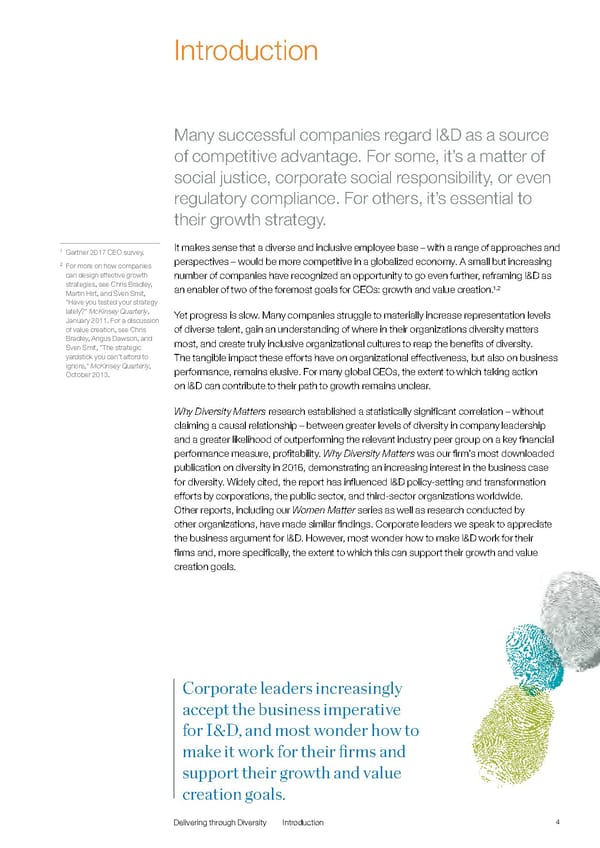Introduction Many successful companies regard I&D as a source of competitive advantage. For some, it’s a matter of social justice, corporate social responsibility, or even regulatory compliance. For others, it’s essential to their growth strategy. 1 Gartner 2017 CEO survey. It makes sense that a diverse and inclusive employee base – with a range of approaches and 2 For more on how companies perspectives – would be more competitive in a globalized economy. A small but increasing can design effective growth number of companies have recognized an opportunity to go even further, reframing I&D as strategies, see Chris Bradley, 1,2 Martin Hirt, and Sven Smit, an enabler of two of the foremost goals for CEOs: growth and value creation. “Have you tested your strategy lately?” McKinsey Quarterly, Yet progress is slow. Many companies struggle to materially increase representation levels January 2011. For a discussion of value creation, see Chris of diverse talent, gain an understanding of where in their organizations diversity matters Bradley, Angus Dawson, and most, and create truly inclusive organizational cultures to reap the benefits of diversity. Sven Smit, “The strategic yardstick you can’t afford to The tangible impact these efforts have on organizational effectiveness, but also on business ignore,” McKinsey Quarterly, performance, remains elusive. For many global CEOs, the extent to which taking action October 2013. on I&D can contribute to their path to growth remains unclear. Why Diversity Matters research established a statistically significant correlation – without claiming a causal relationship – between greater levels of diversity in company leadership and a greater likelihood of outperforming the relevant industry peer group on a key financial performance measure, profitability. Why Diversity Matters was our firm’s most downloaded publication on diversity in 2016, demonstrating an increasing interest in the business case for diversity. Widely cited, the report has influenced I&D policy-setting and transformation efforts by corporations, the public sector, and third-sector organizations worldwide. Other reports, including our Women Matter series as well as research conducted by other organizations, have made similar findings. Corporate leaders we speak to appreciate the business argument for I&D. However, most wonder how to make I&D work for their firms and, more specifically, the extent to which this can support their growth and value creation goals. Corporate leaders increasingly accept the business imperative for I&D, and most wonder how to make it work for their firms and support their growth and value creation goals. Delivering through Diversity Introduction 44
 Delivering Through Diversity Page 5 Page 7
Delivering Through Diversity Page 5 Page 7